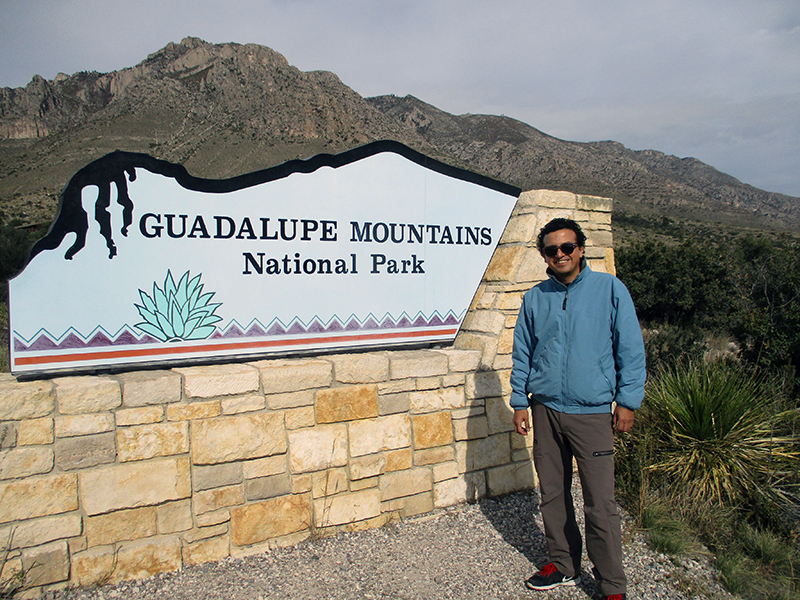 Two national parks — Guadalupe Mountains and Carlsbad Caverns — sit not far from one another in a little corner of far west Texas and southeastern New Mexico, and in fact they are part of the same mountain system. We visited both in early December, stopping first at Guadalupe Mountains National Park.
Two national parks — Guadalupe Mountains and Carlsbad Caverns — sit not far from one another in a little corner of far west Texas and southeastern New Mexico, and in fact they are part of the same mountain system. We visited both in early December, stopping first at Guadalupe Mountains National Park.
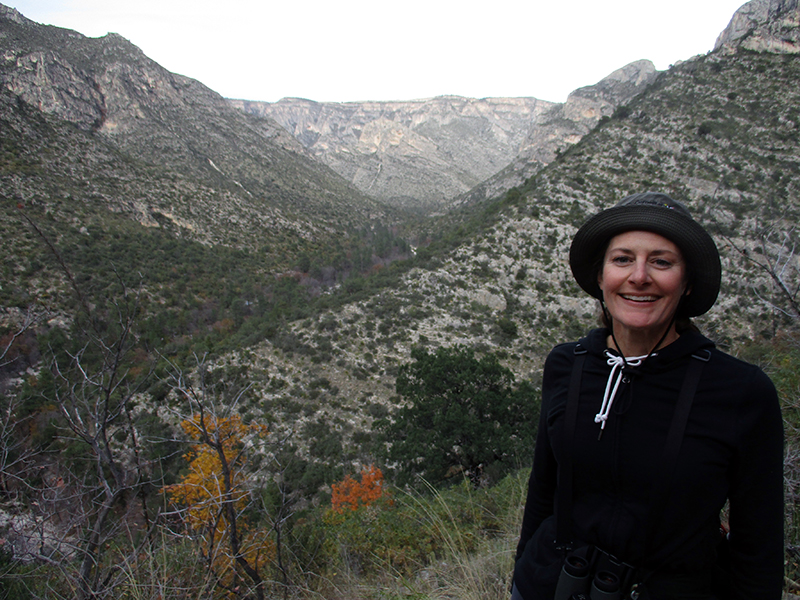 The park protects 90,000 acres of Chihuahuan Desert, canyon and highland habitat. Geologists flock here because the Guadalupe Mountains are part of an enormous marine fossil reef system — the Capitan Reef — that formed 260-270 million years ago when the tropical Permian Sea covered the area. Much of that reef system lies buried beneath the Earth’s surface, but uplift here has exposed the ancient reef and its myriad treasures: fossils of sponges, algae, snails, nautilus-like creatures and more.
The park protects 90,000 acres of Chihuahuan Desert, canyon and highland habitat. Geologists flock here because the Guadalupe Mountains are part of an enormous marine fossil reef system — the Capitan Reef — that formed 260-270 million years ago when the tropical Permian Sea covered the area. Much of that reef system lies buried beneath the Earth’s surface, but uplift here has exposed the ancient reef and its myriad treasures: fossils of sponges, algae, snails, nautilus-like creatures and more.
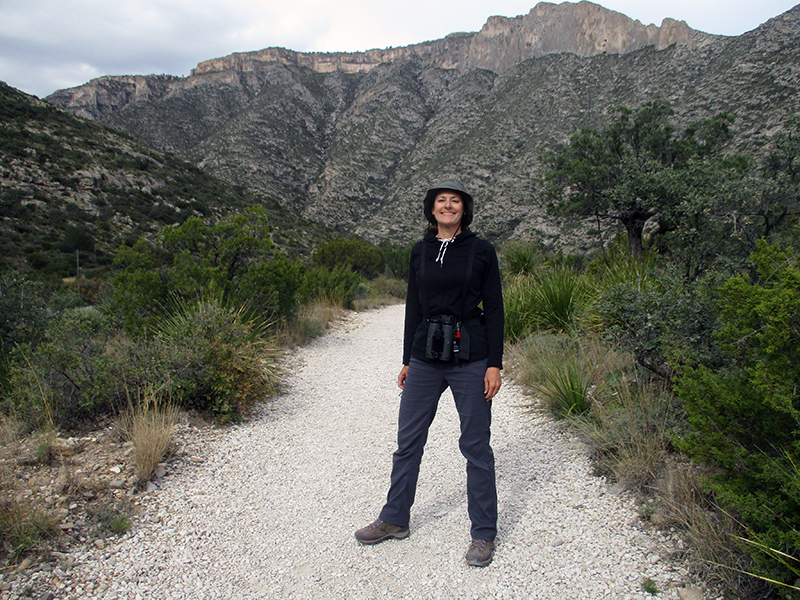 We were more interested in hiking, and with only one day at our disposal we could explore just a small fraction of the 80+ miles of trails in the park. We set off on the McKittrick Canyon Trail, a gravel path that led us through low scrubland before entering a riparian zone and climbing into patches of bigtooth maples and gray oaks that showed off their red and gold fall colors.
We were more interested in hiking, and with only one day at our disposal we could explore just a small fraction of the 80+ miles of trails in the park. We set off on the McKittrick Canyon Trail, a gravel path that led us through low scrubland before entering a riparian zone and climbing into patches of bigtooth maples and gray oaks that showed off their red and gold fall colors.
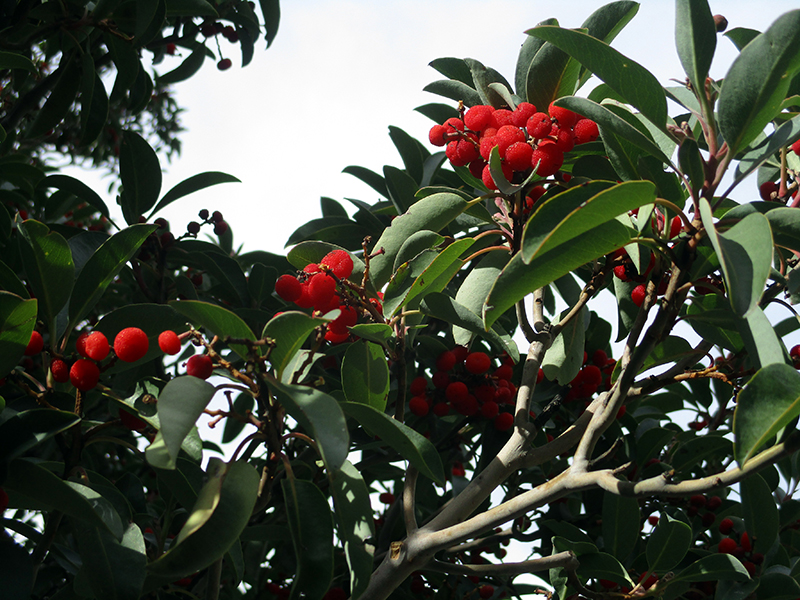 Another common tree here is the Texas madrone, and they were full of ripe red berries that ringtails come out at night to feed on, leaving behind red scat everywhere on the trail. Too bad I didn’t know until later that madrone berries are a choice edible for people as well, or I would have added them to our picnic lunch.
Another common tree here is the Texas madrone, and they were full of ripe red berries that ringtails come out at night to feed on, leaving behind red scat everywhere on the trail. Too bad I didn’t know until later that madrone berries are a choice edible for people as well, or I would have added them to our picnic lunch.
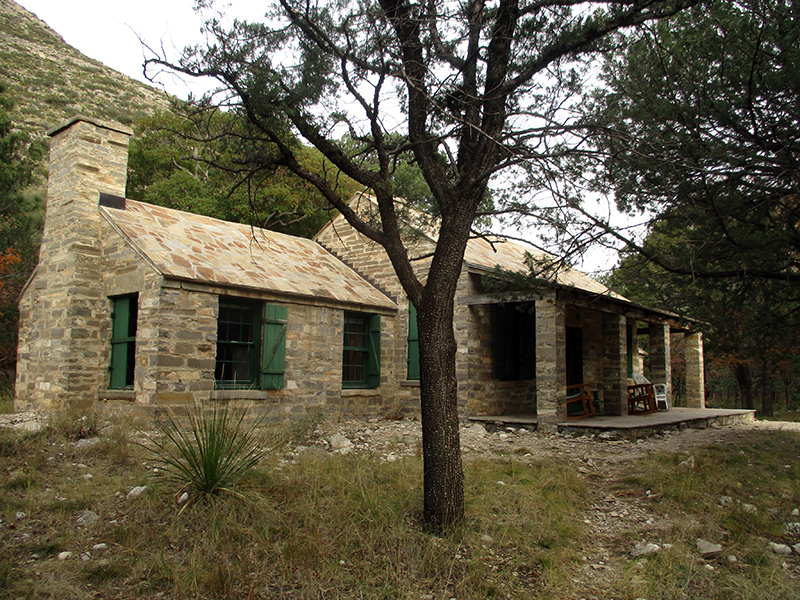 The path continued gently uphill through the shaded canyon. We detoured to the historic Pratt Cabin, which geologist William Pratt built in the 1920s. With no roads this far up the canyon, Pratt had the stone and other building materials — as well as all the furniture that remains in the cabin today — brought in on horseback. He donated the cabin and 5,000 acres of his beloved land in McKittrick Canyon to the National Park Service in 1959.
The path continued gently uphill through the shaded canyon. We detoured to the historic Pratt Cabin, which geologist William Pratt built in the 1920s. With no roads this far up the canyon, Pratt had the stone and other building materials — as well as all the furniture that remains in the cabin today — brought in on horseback. He donated the cabin and 5,000 acres of his beloved land in McKittrick Canyon to the National Park Service in 1959.
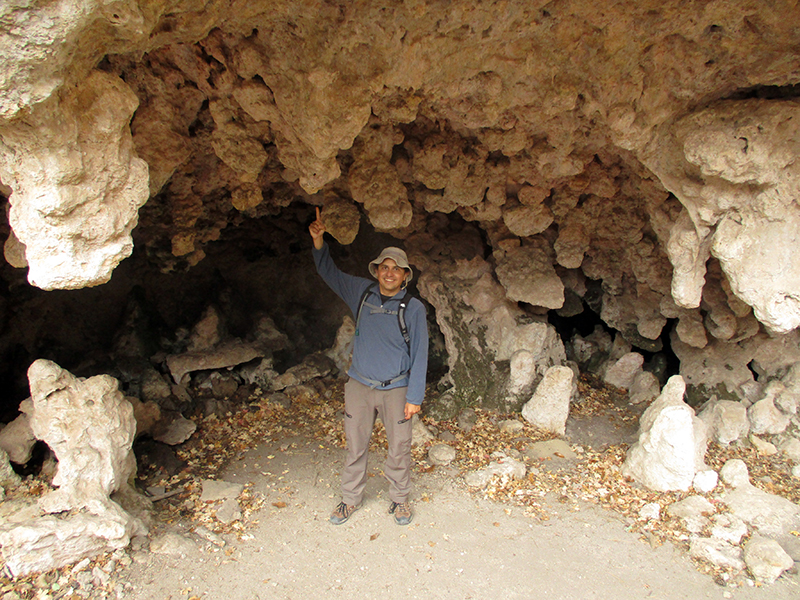 We also detoured at The Grotto, a small limestone cave where dripping water percolates through the rock, and beyond that lay the ruins of an old hunting cabin. We returned to the main trail and gained some elevation for better views of the canyon. Before reaching McKittrick Ridge, a popular destination for backpackers where one of the park’s 10 backcountry campgrounds is located, we decided to turn around to make it back to the parking lot before the gate closed at 4:30 p.m. Nor did we have time to check out the extensive trail network in the Pine Springs or Dog Canyon areas of the park, but one day we’ll return to summit Texas’ highest mountain, Guadalupe Peak.
We also detoured at The Grotto, a small limestone cave where dripping water percolates through the rock, and beyond that lay the ruins of an old hunting cabin. We returned to the main trail and gained some elevation for better views of the canyon. Before reaching McKittrick Ridge, a popular destination for backpackers where one of the park’s 10 backcountry campgrounds is located, we decided to turn around to make it back to the parking lot before the gate closed at 4:30 p.m. Nor did we have time to check out the extensive trail network in the Pine Springs or Dog Canyon areas of the park, but one day we’ll return to summit Texas’ highest mountain, Guadalupe Peak.
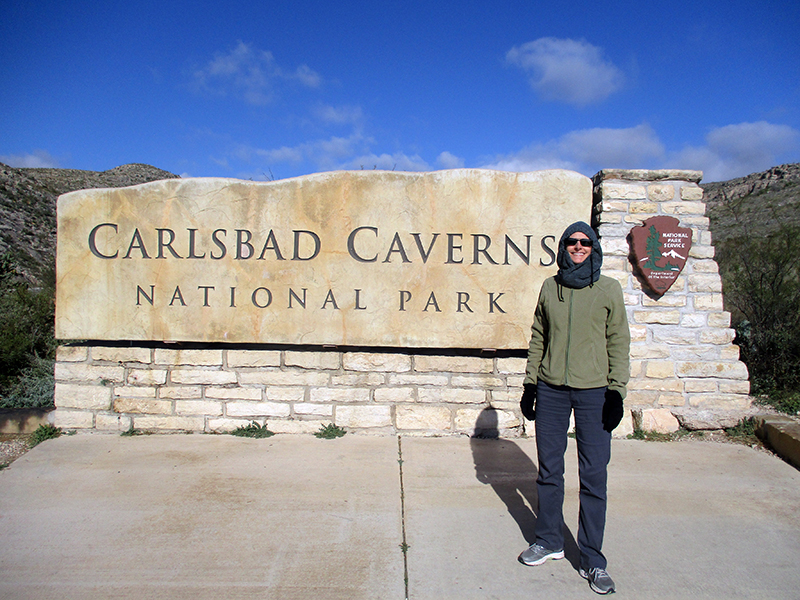 About half an hour’s drive from Guadalupe Mountains is Carlsbad Caverns National Park. No lodging exists within the park, so we stayed in nearby Whites City. “City” is a bit ambitious. It has one hotel, one gas station, one restaurant, and one store advertising groceries but that really only carried souvenirs and convenience store junk food. And that’s pretty much all there is to the town.
About half an hour’s drive from Guadalupe Mountains is Carlsbad Caverns National Park. No lodging exists within the park, so we stayed in nearby Whites City. “City” is a bit ambitious. It has one hotel, one gas station, one restaurant, and one store advertising groceries but that really only carried souvenirs and convenience store junk food. And that’s pretty much all there is to the town.
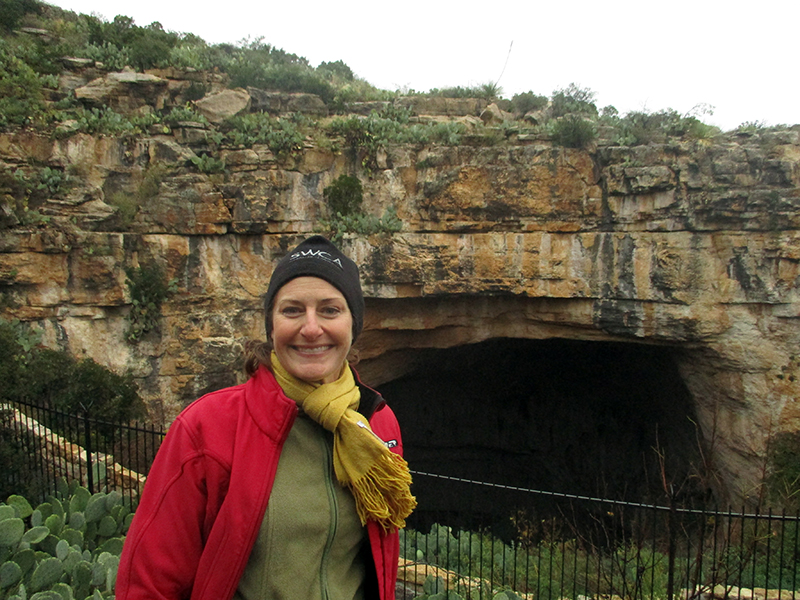 We left early the next morning to drive up the hill to the Visitor Center to get tickets (free for America the Beautiful pass holders) for the self-guided Natural Entrance and Big Room routes. We entered via the historic cave entrance, at the mouth of which is an amphitheater where summertime visitors sit at dusk to watch the magnificent nightly exit of the Brazilian (also known as Mexican) free-tailed bats. The bats swirl their way out of the cave by the tens of thousands and feed on insects until returning to the cave at dawn for their daytime slumber.
We left early the next morning to drive up the hill to the Visitor Center to get tickets (free for America the Beautiful pass holders) for the self-guided Natural Entrance and Big Room routes. We entered via the historic cave entrance, at the mouth of which is an amphitheater where summertime visitors sit at dusk to watch the magnificent nightly exit of the Brazilian (also known as Mexican) free-tailed bats. The bats swirl their way out of the cave by the tens of thousands and feed on insects until returning to the cave at dawn for their daytime slumber.
 During our visit, however, the bats were in their winter home south of the border, and human visitors were noticeably absent as well. We descended into the caverns along a one-mile paved pathway, passing cavern walls covered in cave popcorn and flowstone. The large bat cave sits 200 feet below ground, and then a long main corridor descends to an underworld of whimsical formations such as the Witch’s Finger, Iceberg Rock and the Boneyard, with its Swiss-cheese-like limestone mazes. The quantity of stalagmites, stalactites, columns and draperies was simply astounding.
During our visit, however, the bats were in their winter home south of the border, and human visitors were noticeably absent as well. We descended into the caverns along a one-mile paved pathway, passing cavern walls covered in cave popcorn and flowstone. The large bat cave sits 200 feet below ground, and then a long main corridor descends to an underworld of whimsical formations such as the Witch’s Finger, Iceberg Rock and the Boneyard, with its Swiss-cheese-like limestone mazes. The quantity of stalagmites, stalactites, columns and draperies was simply astounding.
 At about 750 feet below the surface we joined the Big Room, which visitors can also reach via elevator (which is how everyone must exit because traffic on most pathways is unidirectional). Another one-mile paved route circles the Big Room, which, at 8.2 acres, is the fifth-largest natural underground chamber in North America. Most of it sits on a rather level surface, with the path taking visitors past iconic cave formations such as the Rock of Ages, Temple of the Sun, Totem Pole, Painted Grotto, Giant Dome and Chinese Pagoda. Miniature ponds filled with shiny cave pearls at ground level contrast with spiky soda straws hanging from the ceiling.
At about 750 feet below the surface we joined the Big Room, which visitors can also reach via elevator (which is how everyone must exit because traffic on most pathways is unidirectional). Another one-mile paved route circles the Big Room, which, at 8.2 acres, is the fifth-largest natural underground chamber in North America. Most of it sits on a rather level surface, with the path taking visitors past iconic cave formations such as the Rock of Ages, Temple of the Sun, Totem Pole, Painted Grotto, Giant Dome and Chinese Pagoda. Miniature ponds filled with shiny cave pearls at ground level contrast with spiky soda straws hanging from the ceiling.
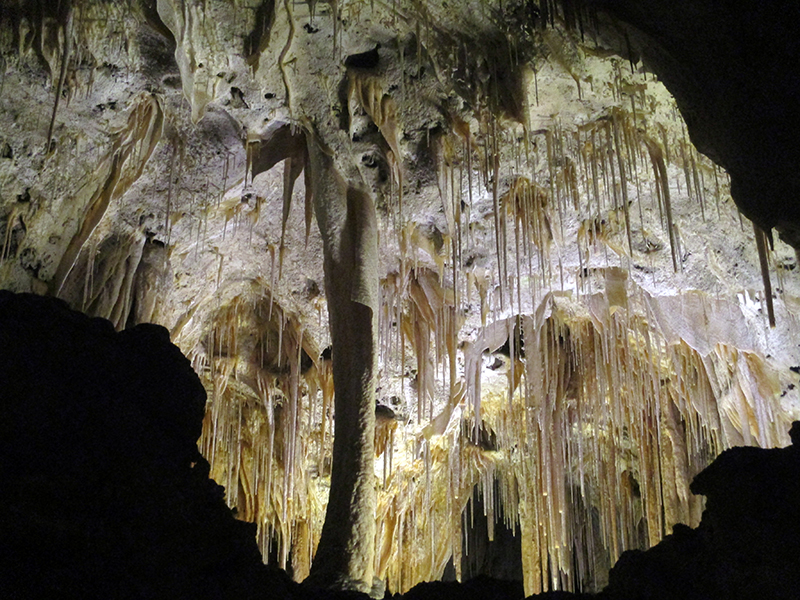 We spent several hours marveling at the cave’s limestone wonders, 95 percent of which are no longer growing because, despite the ponds in the cave and occasional dripping sounds, Carlsbad is considered a dry cave. When the cave formations were still growing, drop by drop from calcite crystals, it took 500,000 years for Carlsbad Caverns to become what it is today.
We spent several hours marveling at the cave’s limestone wonders, 95 percent of which are no longer growing because, despite the ponds in the cave and occasional dripping sounds, Carlsbad is considered a dry cave. When the cave formations were still growing, drop by drop from calcite crystals, it took 500,000 years for Carlsbad Caverns to become what it is today.
 We had already toured three other impressive caves during Project 100 (Jewel Cave, Wind Cave and Mammoth Cave) and thought this one might be just more of the same. But no two caves are alike, and Carlsbad’s extensive, decorative formations have a drama and beauty all their own. Especially in the Big Room, as at White Sands National Monument, we couldn’t help repeating, “This is so cool!” over and over.
We had already toured three other impressive caves during Project 100 (Jewel Cave, Wind Cave and Mammoth Cave) and thought this one might be just more of the same. But no two caves are alike, and Carlsbad’s extensive, decorative formations have a drama and beauty all their own. Especially in the Big Room, as at White Sands National Monument, we couldn’t help repeating, “This is so cool!” over and over.
The pictures from the Carlsbad Cave were great. The nightly bat escape would be something to experience, too bad the timing wasn’t right.
Haven’t heard of any distressing camping episodes lately, that’s a relief.
Onward!!
Years ago after graduation from college I did have a chance to visit Carlsbad Caverns when the bats were there, and it was an amazing sight.